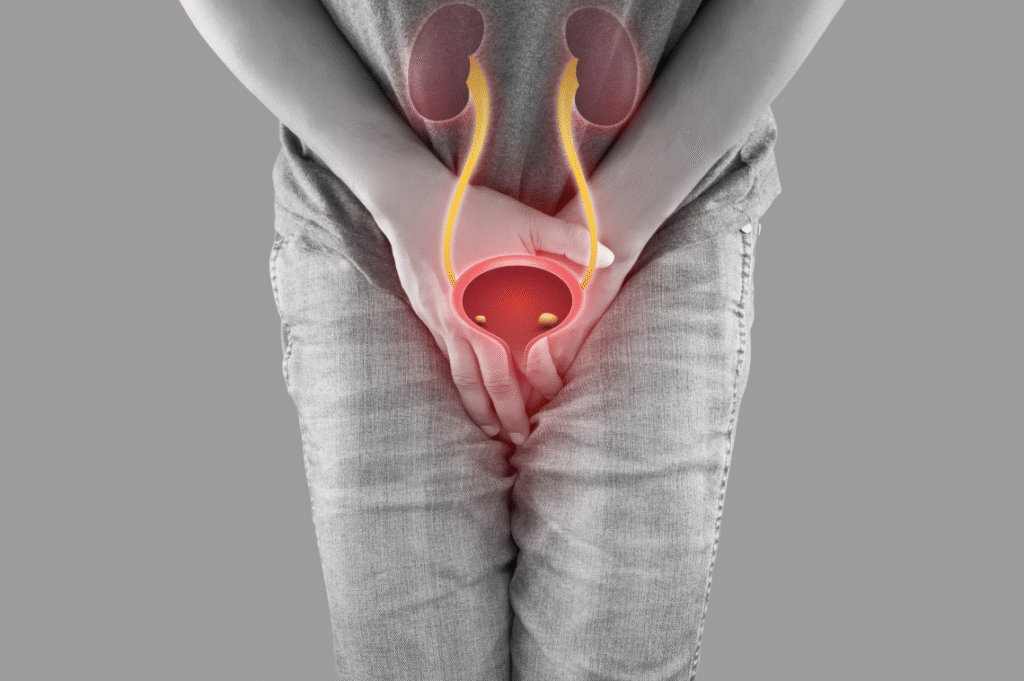
A urethral stricture is a narrowing of the urethra caused by scar tissue. It restricts urine flow, leading to discomfort, infections and potentially kidney damage if left untreated. Strictures are more common in men, as their longer urethra is more susceptible to injury.
Causes / risk factors
- Trauma or injury to the urethra (e.g., from falls, accidents or pelvic fractures)
- Long‑term catheterization or repeated instrumentation
- Sexually transmitted infections or chronic urethritis
- Previous surgeries on the prostate or urethra
- Radiation therapy and inflammatory conditions
Symptoms
- Weak, slow or intermittent urine stream
- Straining or prolonged time to empty the bladder
- Pain or burning while urinating
- Blood in the urine or dark, cloudy urine
- Recurrent urinary tract infections and dribbling after urination
When to seek help / emergency signs
- Inability to urinate or acute urinary retention
- Severe lower abdominal pain or distention
- Visible blood in the urine or clot retention
- Fever or chills associated with urinary symptoms
- Persistent or worsening urinary difficulties despite conservative measures
Diagnosis
Initial assessment includes urine flow studies and measurement of residual urine after voiding. Retrograde urethrogram (an X‑ray using contrast dye) or urethroscopy (using a thin camera) identifies the location and length of the stricture. Ultrasound of the urethra and bladder helps assess upstream dilation. In some cases, urodynamic studies evaluate the impact of the stricture on bladder function.
Treatment options
Treatment is tailored to stricture length and severity. Options include:
- Dilation – gradually widening the narrowed segment with increasing‑sized dilators.
- Internal urethrotomy – using an endoscopic laser or cold knife to cut through the scar tissue.
- Urethroplasty – surgical removal of the scarred segment and reconnection of healthy ends, often using tissue grafts; considered the gold standard for long strictures.
- Catheter-based stents – rarely used, but can provide temporary relief.
We prefer minimally invasive techniques when appropriate but offer open reconstruction for complex cases to ensure durable results.
Prevention / aftercare
Use protective gear during contact sports, practise safe sex and get prompt treatment for urinary infections. Avoid unnecessary catheterisation and ensure proper lubrication if catheter insertion is needed. After surgery, follow catheter care instructions carefully and attend scheduled follow‑ups to monitor healing.
